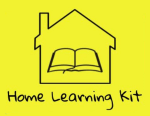Classical Education has existed for centuries. It is designed to teach three of the seven Liberal Arts and form the basis of thought and advanced learning. Stemming from the same principles, a Modern Classical Education seeks to do the same with the advantage of developments in teaching and modern technology. Here, I’ll discuss the principles of a Classical Education, and how it can be modernized for the 21st century.
What is Classical Education?
Classical Education is instruction and learning through the Trivium model, which consists of Grammar, Logic, and Rhetoric. The term Trivium originated in the Middle Ages to describe the Ancient Greek process of developing critical thinking and persuasion abilities. The process, broken into three parts, can be mapped onto the general stages of schooling: elementary school, middle school, and high school. Let’s learn more about what each part means.
Grammar
Grammar refers to the core principles of language such as reading and basic writing. The years studying grammar, usually elementary school ages, are meant to develop a foundation and understanding of language. It is characterized by lots of repetition, memorization, and practice.
Logic
Logic refers to the development of correct reasoning. Practicing logic typically occurs with middle schoolers, whose favorite word is “Why?”. Plus, as any parent of a middle schooler knows, they love to argue. A student in this stage will begin applying analytical reasoning, examining ideas and arguments, and connecting ideas to reach conclusions. For example:
All birds lay eggs -> Pigeons are birds -> Pigeons lay eggs
or…
I catch cold when people around me are sick -> Colds are infectious
Rhetoric
Rhetoric refers to the use of the core knowledge established with Grammar and the critical thinking of Logic to explain, argue, and defend opinions verbally or in writing. This stage is typically aligned with high school ages, where debate and persuasive essay writing are more common.
How to Teach A Modern Classical Education
A Modern Classical Education is built on the same learning principles described above. And, while some tools and methods have developed over time to optimize learning, the fundamental core remains.
Modern Grammar
The best methods of teaching Grammar that I’ve found are with jingles and rhythm. There’s no better way to get all the repetition and memorization than to put it to music and dancing! My favorite resource for this type of learning is Shurley Instructional Materials. They have lots of fun jingles to learn the basics of Language Arts, and I used them all the time back when I taught public school. It was the best way for my low-level kids to learn well and get caught up with everyone else. Shurley also builds off the basic parts of speech with Q&A Flows and Sentence Blueprints to build a strong foundation.
Modern Logic
Teaching Logic isn’t something that’s really focused on in modern education, so I didn’t have much knowledge of it from my own experience. While doing some research, I came across this article from Memoria Press. It’s a bit technical for our purposes here, but it provides a good outline for teaching Logic to your children.
- Study good reasoning first: Learning correct reasoning will help your child identify poor reasoning.
- Study deduction before induction: Teach connections like “All A are B -> C is A -> C is B” first. This is concrete reasoning and connection making (deductive reasoning). Then move into inductive reasoning, which is about making predictions based on other information like “Every dog I’ve met is friendly, therefore most dogs are friendly.”
- Study formal logic before material logic: Teach the logical process of making connections (formal logic) before teaching logic to find truth (material logic).
As far as tools to use, there are plenty of free logic worksheets that you can find online. If you’re unopposed to screen time for your children and are willing to spend some money, LogIQids is a good resource. They have a free trial so you can try it out before paying for anything.
Modern Rhetoric
I honestly don’t have any type of “fancy, modern” method of teaching Rhetoric. In fact, I think the tried and true methods are best. Our kids are inundated with attention grabbing ads, short social media posts, and mindless video more than ever before. The best thing you can do for your child is to challenge them to speak and write well. Engage them in debate on various topics. Have them write persuasive essays for viewpoints they both agree with and disagree with. The subject doesn’t have to be serious like politics or global affairs. Debate about the best way to make tacos or write what color a room should be painted (with citations to relevant research, of course).
The goal is to make your child capable of building a comprehensive position and defending it. With short attention spans and short content saturating our modern culture, your children can stand out by developing complete thoughts.
Wrapping Up
A Modern Classical Education is a fantastic way to help your child develop not just their ability to read and write, but also to think, analyze, and learn any subject. It may even help your child develop their social skills through comfort in dialogue. Whether you apply these concepts in your homeschool or as a supplement to your child’s traditional schooling, you can prepare your child to excel above their peers
If this article helped you, sign up for my newsletter for more insights on teaching homeschool and fun learning games you can play with your kids. As an added bonus, I’ll give you a free copy of my state-by-state homeschool guide full of useful information and links about your state’s homeschool laws.
If you have any questions, feel free to reach out on social media. I’d love to hear from you!

